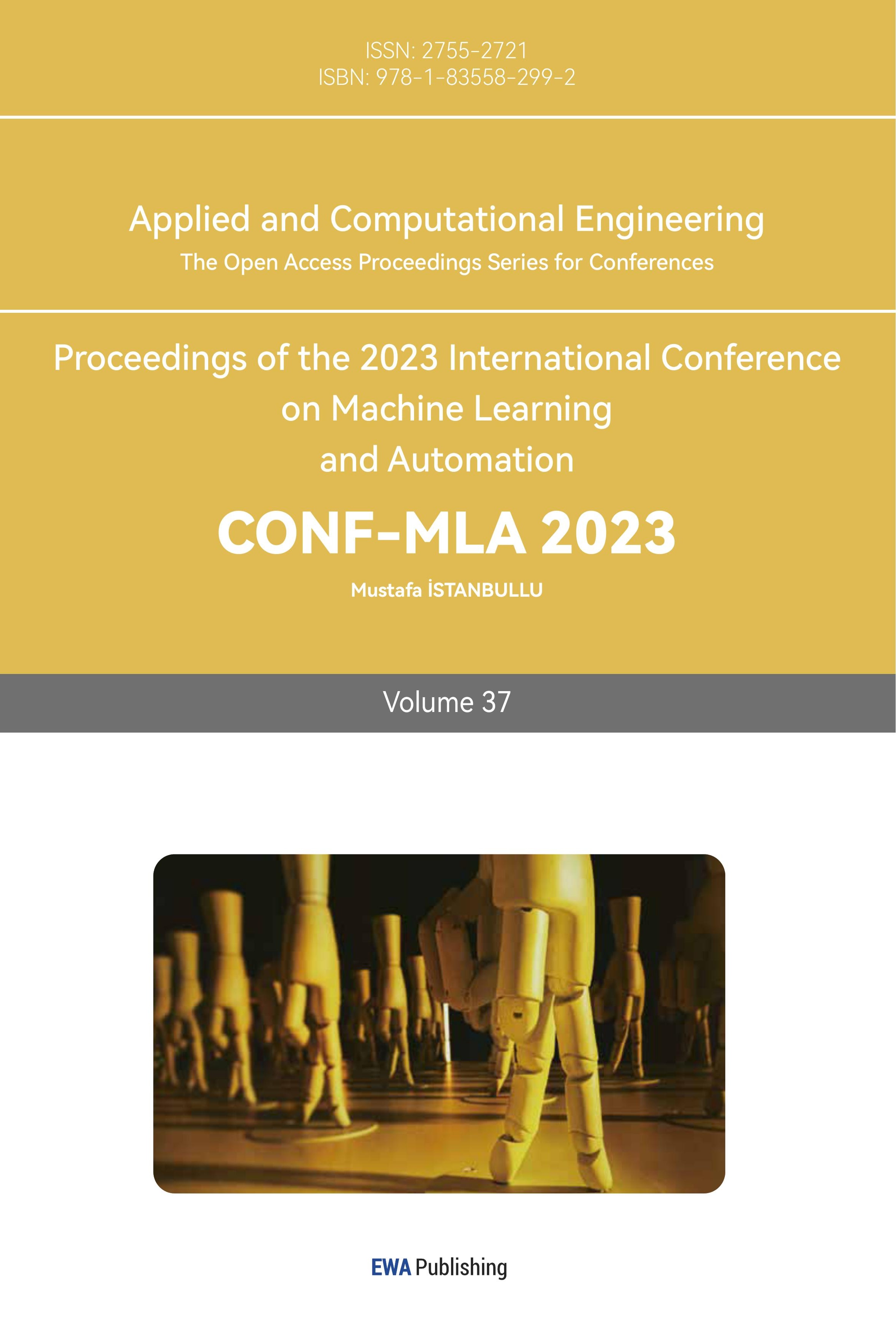References
[1]. Rumelhart D E Hinton G E Williams R J 1986 Representations by Back propagatingerrors Nature 323(6088): pp 533-536
[2]. Mukherjee A Jain D K 2020 Back Propagation Neural Network Based Cluster Head Identification in MIMO Sensor Networks for Intelligent Transportation System IEEE pp 28524-28532
[3]. Webb G I 2017 Naïve Bayes Encyclopedia of Machine Learning and Data Mining pp 1-2
[4]. Kang C L 2020 Application of Neural Networks Learned by Mentors in Iris Species Recognition Xinzhou Demonstration School Report pp 17-21
[5]. Pandey A Jain A 2017 Comparative Analysis of KNN Algorithm using Various Normalization Techniques I.J.Computer Network and Information Security pp 36-42
[6]. Wu Y Y He J Ji Y M Huang G L Yao H C Zhang P Xu W Guo M J Li Y T 2019 Enhanced Classification Models for Iris Dataset Procedia Computer Science pp 946-954
[7]. Rana D Jena S P Pradhan S K 2020 Performance Comparison of PCA and LDA with Linear Regression and Random Forest for IRIS Flower Classification PalArch’s Journal of Archaeology of Egypt/Egyptology pp 2825-2830
[8]. Hussain Z F Ibraheem H R 2020 A new model for iris data set classification based on linear support vector machine parameter’s optimization pp 1079-1084
[9]. Marques-Silva J Gerspacher T 2020 Explaining Naïve Bayes and Other Linear Classifiers with Polynomial Time and Delay Advance in Neural Information Processing System p 33
[10]. Sang B 2020 Application of genetic algorithm and BP neural network in supply chain finance under information sharing Journal of Computational and Applied Mathematics 384
[11]. Iris dataset https://archive.ics.uci.edu/dataset/53/iris
Cite this article
Yu,C. (2024). Analysis of Naive Bayesian and Back Propagation algorithms in iris classification. Applied and Computational Engineering,37,38-44.
Data availability
The datasets used and/or analyzed during the current study will be available from the authors upon reasonable request.
Disclaimer/Publisher's Note
The statements, opinions and data contained in all publications are solely those of the individual author(s) and contributor(s) and not of EWA Publishing and/or the editor(s). EWA Publishing and/or the editor(s) disclaim responsibility for any injury to people or property resulting from any ideas, methods, instructions or products referred to in the content.
About volume
Volume title: Proceedings of the 2023 International Conference on Machine Learning and Automation
© 2024 by the author(s). Licensee EWA Publishing, Oxford, UK. This article is an open access article distributed under the terms and
conditions of the Creative Commons Attribution (CC BY) license. Authors who
publish this series agree to the following terms:
1. Authors retain copyright and grant the series right of first publication with the work simultaneously licensed under a Creative Commons
Attribution License that allows others to share the work with an acknowledgment of the work's authorship and initial publication in this
series.
2. Authors are able to enter into separate, additional contractual arrangements for the non-exclusive distribution of the series's published
version of the work (e.g., post it to an institutional repository or publish it in a book), with an acknowledgment of its initial
publication in this series.
3. Authors are permitted and encouraged to post their work online (e.g., in institutional repositories or on their website) prior to and
during the submission process, as it can lead to productive exchanges, as well as earlier and greater citation of published work (See
Open access policy for details).
References
[1]. Rumelhart D E Hinton G E Williams R J 1986 Representations by Back propagatingerrors Nature 323(6088): pp 533-536
[2]. Mukherjee A Jain D K 2020 Back Propagation Neural Network Based Cluster Head Identification in MIMO Sensor Networks for Intelligent Transportation System IEEE pp 28524-28532
[3]. Webb G I 2017 Naïve Bayes Encyclopedia of Machine Learning and Data Mining pp 1-2
[4]. Kang C L 2020 Application of Neural Networks Learned by Mentors in Iris Species Recognition Xinzhou Demonstration School Report pp 17-21
[5]. Pandey A Jain A 2017 Comparative Analysis of KNN Algorithm using Various Normalization Techniques I.J.Computer Network and Information Security pp 36-42
[6]. Wu Y Y He J Ji Y M Huang G L Yao H C Zhang P Xu W Guo M J Li Y T 2019 Enhanced Classification Models for Iris Dataset Procedia Computer Science pp 946-954
[7]. Rana D Jena S P Pradhan S K 2020 Performance Comparison of PCA and LDA with Linear Regression and Random Forest for IRIS Flower Classification PalArch’s Journal of Archaeology of Egypt/Egyptology pp 2825-2830
[8]. Hussain Z F Ibraheem H R 2020 A new model for iris data set classification based on linear support vector machine parameter’s optimization pp 1079-1084
[9]. Marques-Silva J Gerspacher T 2020 Explaining Naïve Bayes and Other Linear Classifiers with Polynomial Time and Delay Advance in Neural Information Processing System p 33
[10]. Sang B 2020 Application of genetic algorithm and BP neural network in supply chain finance under information sharing Journal of Computational and Applied Mathematics 384
[11]. Iris dataset https://archive.ics.uci.edu/dataset/53/iris









